Jacqui Palumbo, CNN
Wed, December 13, 2023
Whether lost at the bottom of the ocean, tucked away in a library’s archives or hidden behind a kitchen wall, this year’s arts, archaeology and literary discoveries spanned an astonishing range. Some had only been mysteries for a few decades, like the identity of a man whose photo was used on the cover one of rock’s most famous albums, while others dated back a bit longer — say, 6,000 years? And though many of these great finds were excavated through more conventional means, others required ambitious technological feats: an AI algorithm programmed to identify a centuries-old anonymous play, drones sent high into hard-to-reach caves, and groundbreaking scans made of the Titanic wreckage.
Below are some of the most significant discoveries of 2023.
A still-glimmering sword
It sometimes requires a bit of imagination to visualize a millenia-old artifact in its full glory — but that wasn’t the case with an octagonal sword (pictured above) found still gleaming in a Bavarian grave this past June. Thought to be more than 3,000 years old, from the Middle Bronze Ages, the sword required further examination by archaeologists when it was discovered at a site in at a site in Donau-Ries, Germany, along with the remains of three people. But a statement from researchers later confirmed it was a real weapon, rather than ceremonial or decorative, with “the center of gravity in the front part of the blade indicat(ing) that it was balanced mainly for slashing.”
AI discovery in the archives
The author of a 17th-century Spanish play remained a mystery for centuries — until AI technology identified it in January as a late-career work by one of the country’s most famous authors, Felix Lope de Vega.
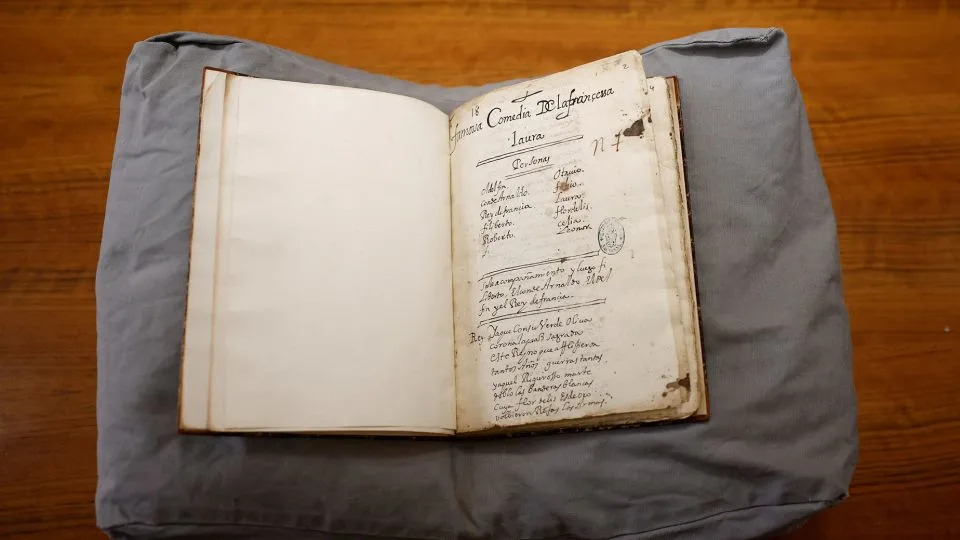
The original manuscript of "La francesa Laura." - Juan Medina/Reuters
Researchers at the country’s National Library were using AI to transcribe some 1,300 anonymous manuscripts and books and check them against works by known authors when it made the discovery. The Spanish Golden Age-era playwright wrote “La francesa Laura,” or “The Frenchwoman Laura,” in the years before his death in 1635. The play is a tale of love, jealousy and poison when the heir to the French throne becomes enamored with Laura, the wife of a Count.
A classic rock mystery, solved
Who is the man carrying a bundle of sticks on the cover of Led Zeppelin’s 1971 album? After half a century, his identity has been revealed as a thatcher from the late-Victorian era, according to the Wiltshire Museum in southwestern England, which made the announcement in November after a visiting research fellow located the original image by photographer Ernest Howard Farmer.
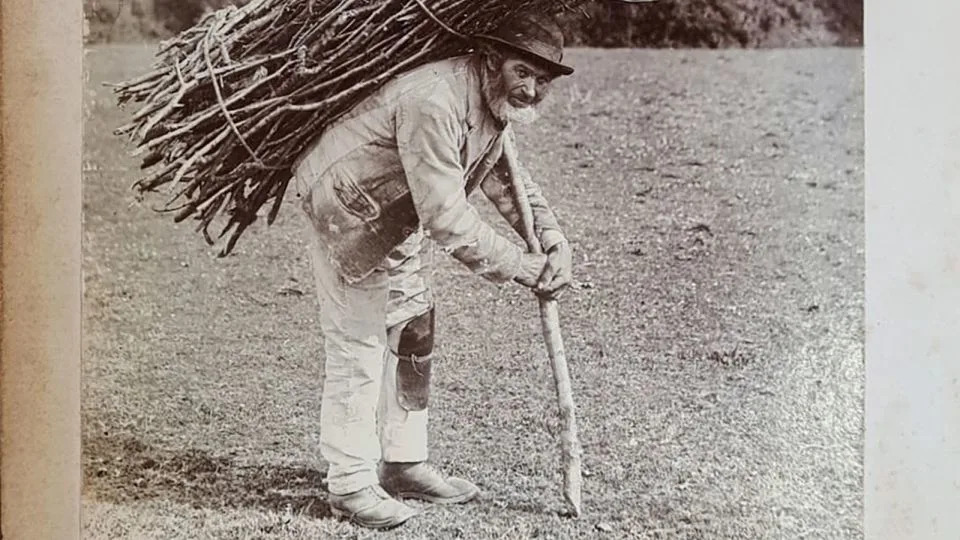
The long-uncredited star of “Led Zeppelin IV” - Courtesy Wiltshire Museum
Thought to be of a widower named Lot Long or Longyear, who lived the town of Mere in the 19th century, the portrait was part of a larger album of architectural and countryside scenes inscribed to the photographer’s aunt. And as to how a colorized portrait wound up the star image of “Led Zeppelin IV”? It was an antiquing find made by the band’s lead singer Robert Plant, in a store in Berkshire, southern England.
Lost Truman Capote story resurfaces
The famed American author Truman Capote received a surprising posthumous addition to his oeuvre this year, after an editor from “The Strand” magazine discovered a previously unknown short story scrawled in one of Capote’s notebooks. Andrew F. Gulli found “Another Day in Paradise” — a story about a disillusioned American woman uses her inheritance to buy a villa in Sicily — while sifting through works held at Washington’s Library of Congress. Along with representatives of the writer’s estate, a team of people subsequently worked to decipher the story, which was written in “very challenging” handwriting, according to Gulli.
“These libraries have millions and millions of pages from all sorts of writers. So, you know, I can only guess that sometimes some of these things can just get missed,” Gulli said.
Ancient sandals get a new superlative
When 22 woven sandals discovered by Spanish miners in 1857 were first carbon dated in the 1970s, they were thought to be about 5,000 years old. But new analysis from the Autonomous University of Barcelona and Alcalá University in Spain has found that estimation to be shy of about 1,000 years: In September, researchers announced that the footwear, made of plant fibers, are, in fact, the oldest known European shoes.
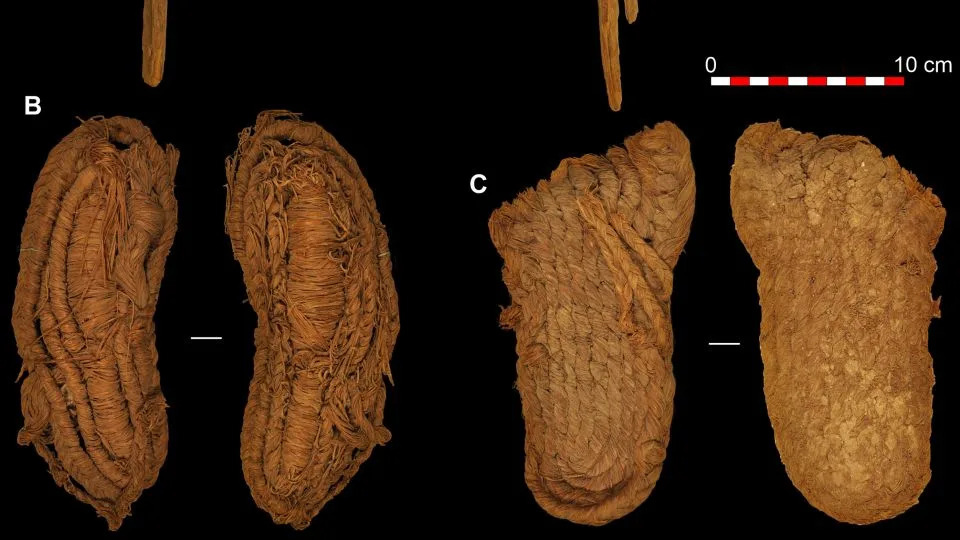
Meet the world’s oldest-known flip-flops. - Martínez-Sevillaet al.,Sci. Adv
Preserved thanks to dry conditions in the cave in southern Spain, along with an assortment of fiber baskets and other goods, the sandals demonstrate “the ability of prehistoric communities to master this type of craftsmanship,” according to an author of the study.
Two new “Mona Lisa” revelations
So much has been debated about Leonardo da Vinci’s “Mona Lisa” over the years: who she was, why she’s smiling, even where she was painted — with an historian recently asserting that the bridge in the background is actually in a different picturesque Tuscan town than previously believed, for example. And now, scientists in France and the UK have discovered a new piece of the portrait’s puzzle, hidden within the base layer of Leonardo’s paint.
Using X-ray diffraction and infrared spectroscopy, the team detected a mineral compound known as plumbonacrite, which forms when oil and lead oxides are mixed and helps paint dry faster. While it’s known that later artists including Rembrandt used such a technique, the authors of the study pose that Leonardo might have been the first.
“Each time you discover something on his processes, you discover that he was clearly ahead of his time,” Gilles Wallez, an author of study, told CNN in October
.
A luxurious lavatory
In February, archaeologists released details on what may be the world’s oldest known flush toilet. The 2,400-year-old lavatory and bent pipe — likely a status symbol among China’s elite at the time — were discovered last summer in the ruins of a palace at the Yueyang archaeological site in the city of Xi’an, according to Chinese state media.
A luxurious lavatory
In February, archaeologists released details on what may be the world’s oldest known flush toilet. The 2,400-year-old lavatory and bent pipe — likely a status symbol among China’s elite at the time — were discovered last summer in the ruins of a palace at the Yueyang archaeological site in the city of Xi’an, according to Chinese state media.

This toilet seat and pipe provides a peek into Han period luxury. - Xinhua/Shutterstock
The toilet was likely only used by a select few in the ruling class, according to researcher Liu Rui, who helped excavate the broken pieces. Liu told state media that the design likely required the assistance of servants to pour in water with each use.
The Great Pyramid’s hidden hallway
Over the past few years, the Great Pyramid of Giza has given up some of her secrets — including a mysterious ‘void’ — thanks to the Scan Pyramids project, which uses technology including infrared thermography and cosmic-ray imaging to better understand its architectural intricacies and still-hidden areas. The latest finding? A 30-foot corridor close to the main entrance
The space may have been constructed to redistribute weight around the entrance, or possibly to allow access to an unknown chamber, according to Mostafa Waziri, head of Egypt’s Supreme Council of Antiquities, who spoke to reporters in March. An article published in the scientific journal Nature stated that further study of the hallway could help scientists better understand how the pyramid was made.
Sending in the drones
As part of continued efforts to survey an area in Alicante, Spain, known for its prehistoric cave paintings, archaeologists this year employed drones to scout out terrain — caves, quarries and the like — deemed either inaccessible or risky to humans. Within days, the drones had found new imagery of deer, goats and human figures.
With the art later confirmed by climbers, the new group of cave paintings are some of the most significant of their kind in the region found in recent decades, according to the archaeology team.
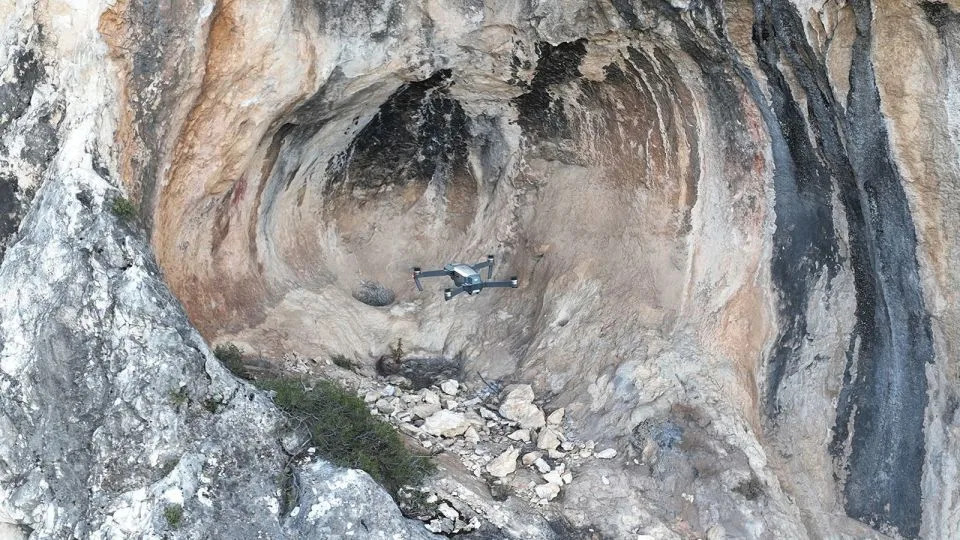
Drones gave a front-row seat to new cave paintings. - Courtesy Javi Molina
“On many occasions we have risked our lives to access cavities located in rugged geographical areas,” Francisco Javier Molina Hernández, an archaeologist at the University of Alicante who was dubbed “Indiana Drones” by local press, told CNN in June. “Many other caves have never been inspected because they are located in inaccessible areas.” Next up, they’ll use more powerful drones to continue scouting across in Spain and Portugal, he said.
Extraordinary artworks in unassuming places
Each year, a select few homeowners, treasure hunters or construction workers stumble upon a lost piece of art history in their residences or on a plot of land — always check your attics — and 2023 was no different.
While appraising their home, one family in northern France discovered that the dusty painting in their living room is actually one of the largest-known works of Flemish 17th-century painter Pieter Brueghel the Younger — it later sold for $850,000 at the Daguerre auction house in Paris.

“The Payment of the Tithes,” by Pieter Brueghel the Younger, cleaned up well. - Christophe Archambault/AFP/Getty Images
In northern England, meanwhile, a couple in the midst of renovating their kitchen discovered that their modest their one-bedroom in York housed two 400-year-old murals, with the wall in question pre-dating the rest of the apartment building.
And finally, while excavating a plot of land earmarked for a new Aldi supermarket in Buckinghamshire, England, archaeologists uncovered a Roman mosaic with colorful tiles while surveying the area ahead of construction. The mosaic is thought to have been part of a villa with a nearby bathhouse.
Spotlight on Henry VIII’s doodles
The mercurial British monarch Henry VIII may have been a bit out of touch at times, reshaping the country’s religious trajectory to calamitous effect simply to get a divorce, but in other ways he was just like us, doodling in the margins of books. A Canadian professor spotted the royal marginalia unexpectedly while looking at an ancient prayer book owned by the Tudor king late in his life. His annotations — some 14 in total — were compared to other known markings to confirm their authenticity.

Henry VIII’s pious markings. - The Trustees of The Wormsley Fund
The book, a gift to Henry, “contains prayers for repentance, for wisdom, for the destruction of enemies, and for the King and his army,” according to the professor, Micheline White. “Towards the end of his reign he definitely had a lot to be worried about,” she noted.
Two portrait glow-ups
Chiseled bone structure and lip filler aren’t just the beauty standards of the 21st century, it seems — new analysis this year revealed two different paintings hundreds of years old were altered to enhance the features of their subjects.
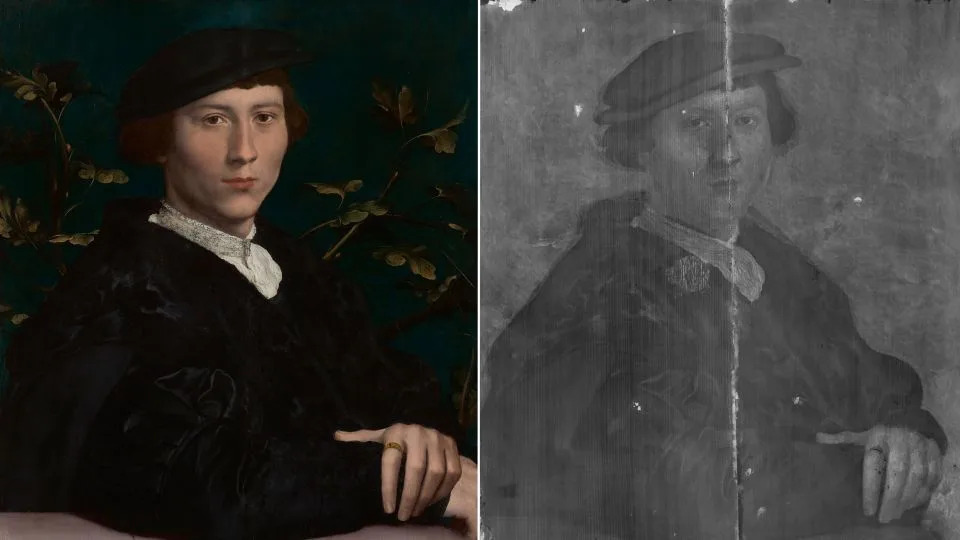
Merchant Derich Born got a more chiseled look. - Royal Collection Trust
In one 16th-century painting by Hans Holbein the Younger, X-rays show the artist worked to sharpen the cheekbones of the subject, a young merchant, Derich Born, who had commissioned him.
And a different painting made by Cornelius Johnson a century later, of the noblewoman Diana Cecil, received an unwelcome makeover sometime in the 19th or 20th century, with edits that plumped her lips and filled in her hairline. Conservators restored Cecil to her natural beauty ahead of an exhibition in November.
A necklace on the ocean floor
Move over, (fictional) “Heart of the Ocean,” because there’s a new Titanic necklace ready for the spotlight. A piece of jewelry featuring the tooth of a Megalodon, a prehistoric shark, was identified in the ocean liner’s wreckage by the deep-water investigation company Magellan, as part of its undertaking an ambitious project to produce a full-size scan of the ship, which has been at the bottom of the Atlantic Ocean, some 13,000 feet deep, since the infamous disaster in 1912.

This prehistoric shark necklace was an unlikely Titanic find. - Magellan/Youtube
Richard Parkinson, CEO of Magellan, called the necklace “astonishing, beautiful and breathtaking.”
“What is not widely understood is that the Titanic is in two parts and there’s a three-square-mile debris field between the bow and the stern,” Parkinson told British television network ITV in May. “The team mapped the field in such detail that we could pick out those details.”
And more underwater treasure
A diver’s chance glance at something metallic on the sea floor of the coast of Sardinia, Italy, turned out to be right on the money — literally. In all, the glimmering treasure they spotted totals somewhere between 30,000 to 50,000 large bronze coins dating back to the fourth century AD.
The drowned treasure could point to an as-yet-undiscovered shipwreck in the area, the Italian culture ministry said in a statement in November. In addition to the surprisingly well-preserved coins, divers subsequently found pieces of amphorae, narrow-necked Roman or Greek jars with two handles.
A Stonehenge-like sanctuary
A town east of Rotterdam can now lay claim to an ancient celestial architectural mystery not unlike the enigma of Stonehenge.
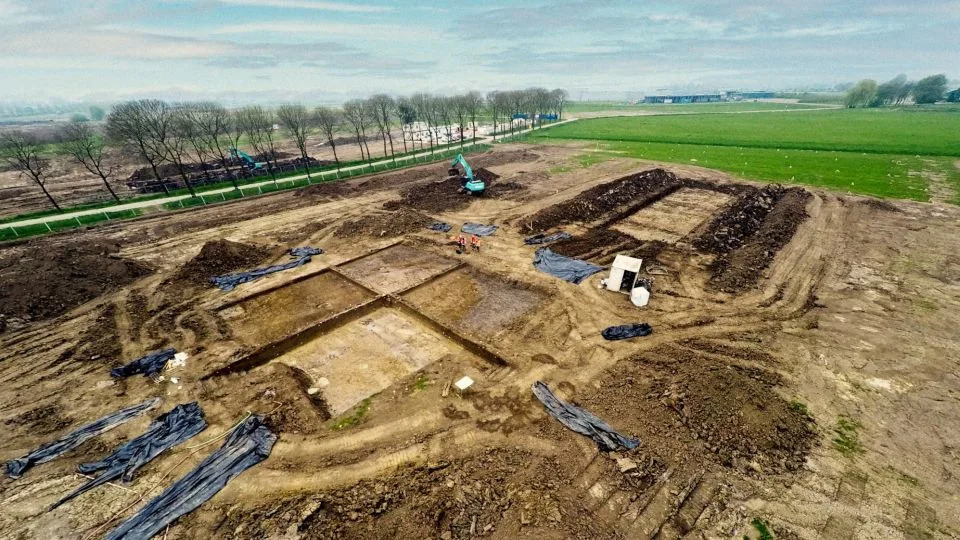
This sprawling plot in Tiel was once a sacred place, - Municipality of Tiel/Reuters
Archaeologists have been excavating a site in Tiel since 2017, and have unearthed a 4,000-year-old sanctuary there that they believe was designed to align with the sun on solstices. The massive site contains offerings including animal skeletons and treasures, including a bronze spearhead, as well as graves.
“This sanctuary must have been a highly significant place where people kept track of special days in the year, performed rituals and buried their dead,” said a statement from the municipality of Tiel, where the site is located. “Rows of poles stood along pathways used for processions.”
‘Huge’ art gallery found carved near Colorado cliffs. See the centuries-old scenes
Moira Ritter
Thu, December 14, 2023 at 2:06 PM MST·2 min read
While conducting research at the Castle Rock Pueblo settlement complex in Colorado, a team of archaeologists from Poland was encouraged by locals to explore “higher, less accessible parts of the canyons.” What they found exceeded their “wildest expectations.”
Approximately 2,600 feet above the ancient Pueblo cliff settlements, the archaeologists discovered a sprawling collection of “huge rock panels” stretching about 2.5 miles around a large plateau, according to a Dec. 13 news release from Jagiellonian University. The collection of “previously unknown huge galleries and petroglyphs” wasn’t created all at once but was added to over time.
The Pueblo people lived on the border between Utah and Colorado as early as 3,000 years ago, the university said. Now, Pueblo sites are popular among archaeologists and tourists alike because they are “built into rock niches or carved into canyon walls.”

The Pueblo people lived in settlements carved into rock niches and canyon walls, according to experts.
“The agricultural Pueblo communities developed one of the most advanced Pre-Columbian cultures in North America,” Radosław Palonka from the university’s Institute of Archaeology said in the release. “They perfected the craft of building multistory stone houses, resembling medieval town houses or even later blocks of flats. The Pueblo people were also famous for their rock art, intricately ornamented jewelry, and ceramics bearing different motifs painted with a black pigment on white background.”
The oldest carvings depict warriors and shamans and date to approximately the third century, known as “the Basketmaker Era,” according to the university. During this time, people lived on flatlands in partly underground pit houses, and they “engaged in farming and produced characteristic baskets and mats.”

The types of carvings changed throughout the centuries, researchers said.

Archaeologists surveying a wall of carvings.
Most of the newly discovered carvings date to between the 12th and 13th centuries, archaeologists said. They portray different things, but many include “complicated geometric shapes.”
Art from this period also included “spirals” up to about 3 feet wide that were carved into the rock panels, Palonka said. The Pueblo people used these carvings for “astronomical observations and to determine the dates of some special days in the calendar,” including solstices and equinoxes.

Some of the carvings depicted “complicated geometric shapes,” archaeologists said.

The rock carvings were found about 1,200 feet about the cliff settlement, researchers said.
“These discoveries forced us to adjust our knowledge about this area,” according to Palonka. “Definitely we have underestimated the number of inhabitants who lived here in the 13th century and the complexity of their religious practices, which must have also taken place next to these outdoor panels.”

During the 15th to 17th centuries, the carvings began showing narratives/
Carvings from the 15th to 17th centuries depicted “large narrative hunting scenes showing bison, mountain sheep and deer hunts,” the university said. More recent additions include horses and the newest pieces even included the signature of famous cowboy Ira Cuthair from 1936.
Researchers plan to continue exploring the area, and they are currently awaiting LiDAR survey results, which they hope will reveal “new, previously unknown sites, mainly from the earlier periods,” Palonka said.
10,000-year-old carving of man holding his genitals is oldest known narrative carving
Ancient finger painting? 57,000-year-old marks in cave are from Neanderthals, study says
Artifact unearthed at 3,000-year-old grave site exceeds ‘wildest dreams.’ See it
Look inside luxurious 2,000-year-old Roman home recently uncovered near the Colosseum
Aspen Pflughoeft
Wed, December 13, 2023 at 3:09 PM MST·2 min read
In a city already teeming with the bygone glory of the ancient Roman empire, archaeologists in Rome, Italy, announced the discovery of another historic treasure: a luxurious 2,000-year-old home.
The ancient Roman home sits near the Colosseum but went unnoticed until 2018, when archaeologists uncovered some of its walls, according to a Dec. 12 news release from Italy’s Ministry of Culture. Excavations have only revealed part of the multi-story house — but its grandeur is already visible.
The house has a main room that functioned like a banquet hall during the summer and was designed to imitate a cave, archaeologists said. The room boasted water features and an elaborate mosaic.

The elaborate mosaic found inside the ancient Roman house.
The mosaic is made of seashells, stones and other materials intricately arranged into complex patterns, a close-up photo shows.
Photos show this colorful, well-preserved mosaic filling one of the cavernous walls. The central scene shows four shrines separated by pillars, archaeologists said.

A close-up photo showing two of the shrines depicted in the mosaic.
One of the shrines has weapons, tridents and trumpets that archaeologists said might reference the owner’s triumph in land and naval battles.

A close-up photo showing the rocks, shells and other materials used in the mosaic.
The upper section of the mosaic has a semicircular shape and depicts a separate scene. Photos show this part of the wall. The scene centers on a large building and coastal city that archaeologists said might reference a wartime conquest of the home’s owner.

A close-up photo showing the upper section of the mosaic.

A close-up photo showing the center building of the mosaic’s upper section.
In a different room, excavations uncovered another type of wall art: white carvings of detailed architecture features, archaeologists said. A photo shows these walls.

Some of the other wall art found at the house.
Based on the home’s extravagant interior and central location, archaeologists think its owner was an elite aristocrat, possibly even a senator or governing official, of ancient Rome.
The home is at least 2,000 years old, dating between the second century B.C. and the first century B.C., archaeologists said.
A YouTube video shared by Italy’s Ministry of Culture shows the area outside of the house and its luxurious interior.
The house is located on the southwestern edge of the Colosseum Archaeological Park and just over half a mile from the Colosseum itself.
Excavations of the recently uncovered ancient home will continue into 2024, the Ministry of Culture said. Officials plan to restore the structure and eventually open it to the public.
Google Translate was used to translate the news release from Italy’s Ministry of Culture.
Medieval skull ‘poking out of the sand’ after storm led to ‘exciting discovery’ in UK
Rare artifacts found in German cave that Stone Age humans and bears used. See finds
See ‘unusual’ and ‘unique’ treasures found in woman’s 1,300-year-old grave in England
No comments:
Post a Comment